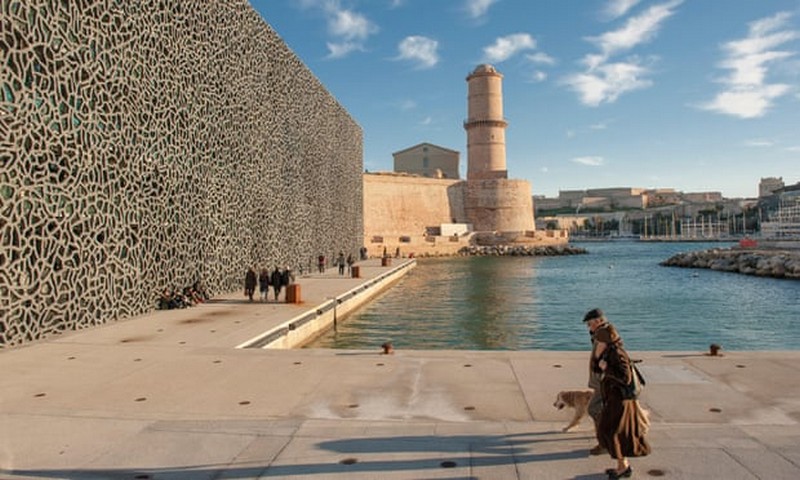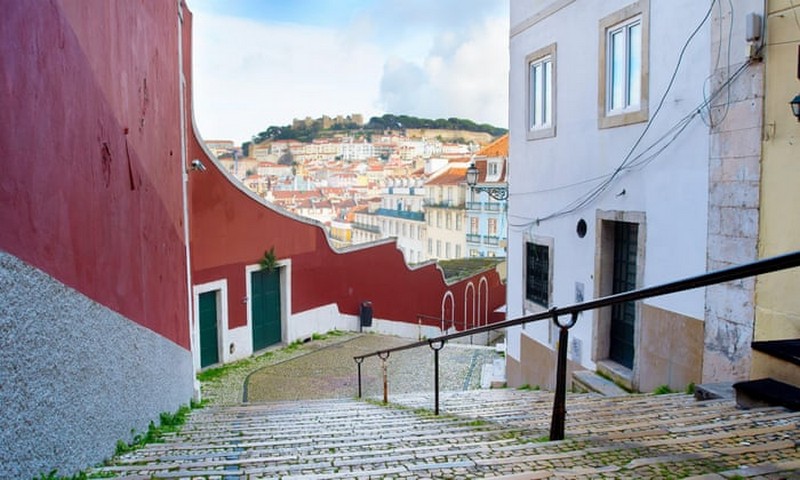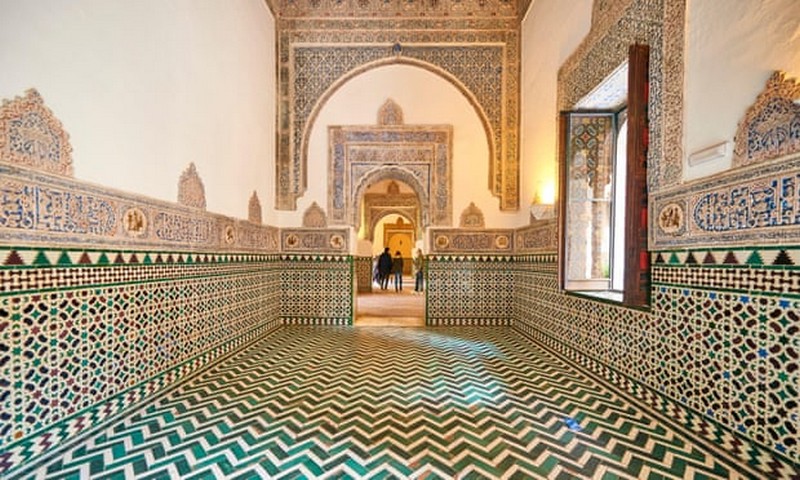Nothing expands a city more than a long walk. Strolling is a fun way to discover new lands and places of your own that you won’t be able to find in any book or travel app. Let’s explore the 6 best walking cities in Europe with us!
“Flâneur-ing” is perhaps best known in France and most typically refers to the capital city of Paris, but other European cultures also have this tradition of walking: from habit of the Italian “passeggiata”, the Spanish “paseo” to the German “wanderlust” – are all just a leisurely stroll to enjoy the sunset. Let’s explore the 6 best walking cities in Europe with us!
1. Berlin: The City of Modern History

The impromptu strolls around the once-popular Old East and West of Berlin will still delight you with the flashy shops lining along Kurfürstendamm street, but if you want to chart your own route to explore new streets, you can walk along the Hansa neighborhood (Hansaviertel) – a gallery grounds where famous architects (including Alvar Aalto, Walter Gropius, Arne Jacobsen and Oscar Niemeyer) display their works of art; to the Tiergarten urban park; Alexanderplatz square – which still exudes the old oriental look; and finally the Prenzlauer Berg area with a plenty of cafes and great brunch spots. If you get tired on this promenade, don’t worry, you can always catch the S-bahn for the return journey.
2. Trieste: The land of exciting journeys and good coffee

The August – a little-noticed harbor on the Adriatic coast, Italy – is a perfect location for activities with various beautiful cafes that are loved by both local people and tourists. The port stands out with spectacular views overlooking the majestic and poetic coastline.
One of the biggest coffee shops here called Caffè degli Specchi is located right in the Piazza Unità d’Italia. This is the perfect place to start a zigzagging stroll: you can stop by the Joyce museum to take a glimpse at the lavish art and furniture collection at Museo Revoltella, or have a sip of coffee at Caffè San Marco – a spacious book cafe with a Viennese breakaway interior (with over 50 types of coffee – as Trieste has long been a hub for the import and export of coffee beans). From this central location, it only takes you a short walk to Villa Opicina, which overlooks the Gulf of Trieste.
3. Marseille: The largest port city in France

This quaint French city seems to have all the elements of a dream city with its Vieux-Port facing the sea, the narrow winding windswept streets of Le Panier, the view covering the landscape of the Basilique Notre-Dame de la Garde and the Rue de la République quarter. Just three blocks away from the port is Maré Noailles, where you can sample fresh produce, smell the spices at the maré des capucins, and enjoy mint tea with kebabs, flatbreads, and stews. Then follow along the front to the Mucem (Museum of European and Mediterranean Civilizations) – but be sure to check out the city’s smaller museums as well!
4. Lisbon: Fish for lunch, fado for dinner

Lisbon’s towns are spread out over steep hills so it can be difficult for walkers to get around, especially when you’re wearing non-active clothing or walking in the heat of the sun. The rolling up and down streets of Alfama, Bairro Alto and Chiado look crooked but actually quite benefit from their narrowness by the cool shade they create. It can be said that Lisbon is one of the cities where the restaurants are the least noticed, yet serve the best food. The fish is one of the best dishes here, it’s hard to judge which is the best among dishes like bacalhau à brás (salted cod with eggs and potatoes), grilled sardines or cataplana (white fish and stewed seafood).
On your wanderings, you’ll find lovely bars and cafes along the way, some filled with melancholy echoes of the after-dark lifestyle. The late great fado singer, Carlos do Carmo, wrote on his landmark album, Um Homem na Cidade (A Man in the City) (1997): “I embrace the dawn, as if it was a child… I walked down the street of the moon.” You can also try this new way of discovering new places by using fado music lyrics as your map and guide – it’s sure to take you out of the clutter.
5. Copenhagen: The nuances of meaning in a city of books

Søren Kierkegaard, the famous Danish pre-existentialist theologian and philosopher, is a lover of shady streets. He once wrote: “Above all, do not lose your desire to walk. Every day, I enter a state of health and get rid of all diseases. I have entered my best thoughts myself, and I do not know of a thought so heavy that one cannot leave it.” His home town, known as one of the most bike-friendly cities in the world, is also known as the city with the most pedestrian traffic.
Start your wanderings at the Assistens Book Cemetery. Although it is a cemetery, this place does not bring a bit of a gloomy feeling. Locals often come here to relax, picnic and enjoy the fresh air under the green foliage.
Behind the walls is the Nørrebro district, filled with designer clothing stores, galleries with outstanding murals and craft beer shops. From here, you can drift slowly toward the harbor area, past the delightful green space of the Royal Library Garden, also known as the Black Diamond Library. For a dining stop, you can choose between Paludan Bogcafé and the chic Library Bar at the Plaza Hotel, known for its Chesterfield chairs and jazz performances and top-notch cocktails.
6. Seville: Holly Gardens and Sacred Religion

Coming to Seville, the city of Spain, a great way to plan your outing is to follow the Holy Week procession routes in the city. During the procession, religious fraternities in pointed hats march toward the center from parishes across the city, all will gather in the last few streets. The process begins at Calle Campana, down to Calle Sierpes, passing the Plaza de San Francisco, along the Avenida de la Constitución, and ends at the church.
Adjacent is the Real Alcázar, a complex that includes palaces, military bases, porches, swimming pools, and beautiful gardens with olive groves. The site is an intricate blend of mudéjar and other European architectural styles, and was developed in the 11th century, when Seville was under the rule of the Abbādid dynasty of Arab Muslims; it was remodeled several times during the course of becoming the residence of the Christian royal family.
Upriver into Triana, this suburban district is linked to the city of Seville in its glory days as the city’s harbor, it’s also known for its ceramics industry. Triana is at its best at dusk when you can enjoy a cold beer by the riverside Calle Betis before heading inside the barrio for tapas and flamenco.


[…] reform in the 20th century, the city has gone under a tremendous makeover, influenced by what makes France so attractive, such as the delightful gastronomy, or the majestic château (castles), however, […]
[…] modern, peaceful European country, Denmark is the epitome of Scandinavian culture. Currently, vaccinated guests are not […]
[…] city is the birthplace of the Italian Renaissance, at the time named the Republic of Florence. Nevertheless, even before the Renaissance, […]